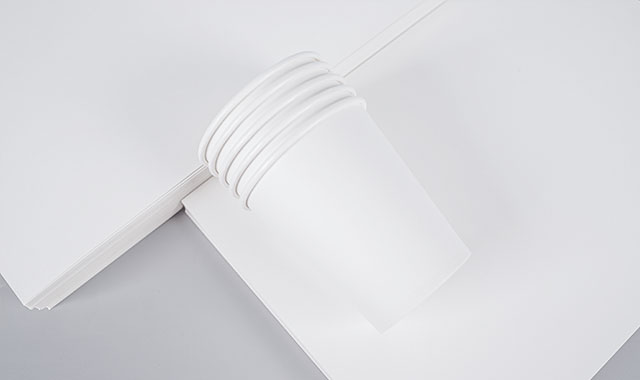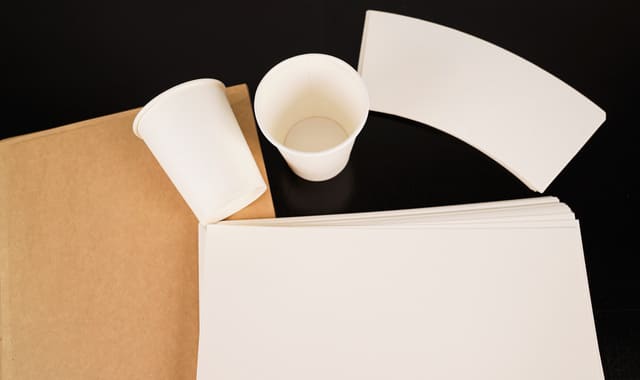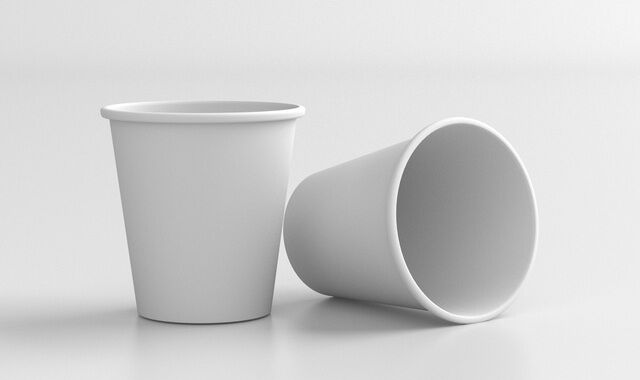What Is Cupstock Performance Testing Procedure?
Everything You Need to Know About Cupstock Performance Testing
Section 1: Understanding Cupstock Material
Cupstock material plays a crucial role in the food packaging industry, especially for products like paper cups. It is important to ensure that cupstock material meets certain standards in order to provide a safe and reliable packaging solution. In this section, we will delve into the various aspects of cupstock material and its significance in food packaging.
What is cupstock material and its significance in food packaging?
Cupstock material is a specialized type of paperboard that is specifically designed for the production of paper cups. It is engineered to provide the necessary strength, durability, and dimensional stability required for beverage and food containers. Cupstock material is commonly used in the food and beverage industry due to its excellent printing properties and ability to hold both hot and cold liquids.
With the increasing awareness about single-use plastics and their environmental impact, cupstock material has gained more prominence as a sustainable alternative for food packaging. It is biodegradable and can be easily recycled, making it an eco-friendly option for disposable cups.
Different types of cupstock material used in the industry
There are various types of cupstock material used in the industry, each with its own unique characteristics and applications. Some of the common types of cupstock material include:
- Polyethylene (PE) coated cupstock: PE coated cupstock is the most widely used type of cupstock material. It is coated with a thin layer of polyethylene, which provides waterproofing and enhances the cup’s resistance to leakage. PE coated cupstock is suitable for both hot and cold beverages.
- Polypropylene (PP) coated cupstock: PP coated cupstock is another popular option for cupstock material. It offers similar characteristics to PE coated cupstock, including waterproofing and enhanced leakage resistance. PP coated cupstock is commonly used for cups that hold hot liquids.
- Poly Vinyl Chloride (PVC) coated cupstock: PVC coated cupstock is a less commonly used option due to environmental concerns associated with PVC. However, it is still used in certain applications where specific properties, such as high clarity or chemical resistance, are required.
- Plastic-free cupstock: Plastic-free cupstock is a newer development in the industry, aimed at providing a more sustainable alternative to traditional coated cupstock materials. These cupstocks are typically treated with a solution that makes them resistant to liquids. Some plastic-free cupstock materials also feature biodegradable or compostable coatings.
Properties of cupstock material affecting performance testing
The performance of cupstock material can be influenced by several key properties. These properties need to be carefully considered and tested to ensure that the cupstock material meets the required performance standards. Some of the properties that affect cupstock performance testing include:
- Waterproofing: Cupstock material should have adequate waterproofing properties to prevent leakage. The waterproofing ability is typically achieved through the application of coatings such as PE or PP.
- Heat resistance: Cupstock material should be able to withstand the temperature of the beverage it contains without softening or deforming. This is particularly important for hot beverages, where the cup should remain intact and safe to handle.
- Rigidity: Cupstock material should have sufficient rigidity to maintain its shape and structural integrity, even when filled with liquid. Rigidity is crucial to prevent cup collapse or deformation during use.
- Interior finish: The interior finish of cupstock material should be smooth and free from any harmful coatings or odors. This ensures the preservation of the beverage’s taste and ensures it is safe for consumption.
- Moisture resistance: Cupstock material should have good moisture resistance to prevent the cup from becoming soggy or losing its structural integrity when exposed to moisture.
- Print quality: For personalized cups, the print quality on the cupstock material should be excellent. High-quality, long-lasting prints contribute to the aesthetic appeal of the cup and help to enhance brand recognition.
By understanding and testing these properties, manufacturers can ensure that the cupstock material used for their products meets the required performance standards, ensuring customer satisfaction and compliance with regulations.
In the next section, we will explore the various performance testing procedures conducted on cupstock material and the importance of following standardized procedures.
Section 2: Cupstock Performance Testing Procedures
Performance testing plays a crucial role in ensuring the quality and reliability of cupstock materials used in the food packaging industry. By subjecting these materials to various tests, manufacturers can assess their performance capabilities and ensure that they meet the required standards and regulations. In this section, we will delve into the common performance tests conducted on cupstock material, the standards and regulations governing cupstock performance testing, and the importance of following standardized procedures in testing cupstock material.
Common performance tests conducted on cupstock material
Cupstock performance testing involves a range of tests that evaluate the material’s properties and its ability to withstand specific conditions. These tests play a vital role in determining the material’s suitability for food packaging applications. Here are some of the common performance tests conducted on cupstock material:
- Watertightness test: This test assesses the cups’ ability to prevent leaks when filled with liquid. By pouring hot liquid into the cup and observing for any leakage, manufacturers can ensure that the cup’s coating or aqueous solution provides an effective barrier against moisture.
- Heat resistance test: This test determines the cup’s ability to withstand high temperatures without deformations or softening. Cups capable of handling liquids at elevated temperatures, such as +120˚C, are considered microwave-safe and suitable for hot beverages.
- Rigidity test: This test evaluates the cup’s ability to retain its shape and structural integrity when subjected to external pressure. By lightly pressing on the cup, manufacturers can ensure that it maintains its form and does not collapse under pressure.
- Interior finish evaluation: This test involves inspecting the cup’s interior for cleanliness and the absence of harmful coatings or odors. A smooth finish is essential for preserving the taste and quality of beverages.
- Moisture resistance test: This test assesses the cup’s ability to withstand moisture by pouring cold water into the cup and observing any signs of degradation or water absorption.
- Print quality assessment: For personalized cups with custom prints, it is crucial to evaluate the print quality. High-quality and long-lasting prints contribute to the aesthetic appeal of the cups and enhance brand recognition.
Standards and regulations governing cupstock performance testing
Cupstock performance testing is governed by various standards and regulations to ensure the safety and quality of food packaging materials. These standards provide guidelines for manufacturers to follow when conducting performance tests on cupstock material. Some of the key standards and regulations include:
- Food contact suitability: Cupstock material must comply with specific standards that ensure it is safe for contact with food. Regulations, such as those set by the FDA in the United States or the EU food contact regulations, provide guidelines on the materials and coatings that can be used in food packaging.
- EU manufacturing marks: Cup manufacturers in the European Union must adhere to specific manufacturing standards and place the appropriate EU manufacturing marks on their products. These marks indicate compliance with EU regulations and requirements.
- Recycling logos: Cupstock material should be recyclable, and manufacturers should display relevant recycling logos on their products to promote responsible waste management and encourage recycling.
Importance of following standardized procedures in testing cupstock material
Adhering to standardized procedures in cupstock performance testing is of utmost importance for several reasons:
- Quality control: Following standardized procedures ensures consistency and reliability in assessing cupstock material performance. It allows manufacturers to identify any issues or defects early on, preventing substandard products from reaching the market.
- Safety assurance: By conducting tests according to established standards, manufacturers can ensure that cupstock material meets the necessary safety requirements. This helps protect consumers from potential health risks associated with food packaging.
- Compliance with regulations: Following standardized testing procedures ensures that cupstock material meets the relevant regulations and standards governing food packaging. Compliance with these regulations is not only a legal requirement but also essential for maintaining consumer trust and confidence in the product.
- Brand reputation: Thorough performance testing demonstrates a commitment to quality and excellence. By following standardized procedures, manufacturers can build a reputation for producing high-quality cupstock material, which can positively impact their brand image and customer satisfaction.
In conclusion, cupstock performance testing is a critical step in ensuring the quality and reliability of cupstock materials used in food packaging. By conducting a range of tests and following standardized procedures, manufacturers can assess the material’s performance capabilities and ensure compliance with regulations. This not only guarantees the safety of the packaged food but also enhances brand reputation and consumer confidence.
Section 3: Real-World Applications and Case Studies
Cupstock performance testing plays a crucial role in ensuring the quality and reliability of paper cups used in various real-world applications. By conducting thorough performance testing, manufacturers can identify any potential issues or defects in the cupstock material, leading to improved product quality and customer satisfaction. In this section, we will explore the real-world applications of cupstock performance testing, present case studies that highlight its impact on product quality, and discuss the benefits of conducting such testing in the food packaging industry.
Showcase of Real-World Applications
Cupstock performance testing finds its application in various industries, with a primary focus on the food packaging industry. Paper cups are widely used for serving hot and cold beverages, such as coffee, tea, soft drinks, and more. They are also used for packaging dairy products like milk, cream, yogurt, and desserts. With the increasing demand for sustainable packaging solutions, paper cups have gained popularity as an alternative to single-use plastic products.
In addition to the food packaging industry, cupstock performance testing is also relevant in other sectors. For instance, in healthcare settings, paper cups are used for dispensing medication and providing water to patients. They are also utilized in the cosmetics industry for packaging creams, lotions, and other beauty products.
Case Studies Highlighting Impact
To understand the impact of cupstock performance testing on product quality, let’s delve into a few case studies:
- Coffee Shop Chain: A well-known coffee shop chain conducted extensive performance testing on their paper cups. Through leak testing, they were able to identify cups with coating defects that compromised the cups’ ability to hold hot liquids without leakage. By addressing these issues through material improvements and adjustments in the manufacturing process, they significantly reduced customer complaints and improved customer satisfaction.
- Dairy Packaging Company: A dairy packaging company performed heat resistance testing on their paper cups designed for containing hot dairy products. This testing ensured that the cups could withstand high temperatures without softening or deforming. By incorporating heat-resistant materials and optimizing the cup manufacturing process, they were able to offer microwave-safe and user-friendly cups, enhancing the overall customer experience.
- Fast Food Chain: A fast-food chain focused on testing the rigidity and moisture resistance of their paper cups. Their performance testing revealed that some cups experienced moisture absorption, resulting in compromised structural integrity. This finding prompted them to switch to cupstock materials with enhanced moisture resistance, improving the cups’ durability and ensuring they maintained their shape even when exposed to liquids for extended periods.
Benefits of Thorough Performance Testing
Thorough performance testing of cupstock material offers numerous benefits in the food packaging industry:
- Product Quality Assurance: By conducting comprehensive performance tests, manufacturers can ensure that their paper cups meet the highest standards of quality and performance. This leads to increased customer satisfaction and trust in the brand.
- Safety and Hygiene: Performance testing allows manufacturers to verify the absence of harmful coatings or odors in the cups, ensuring that they are safe for food and beverage contact. It also helps in evaluating the cleanliness of the cups’ interior finish, thereby maintaining the hygiene standards required for food packaging.
- Enhanced Durability: Performance testing helps identify cupstock materials that provide increased rigidity, heat resistance, and moisture resistance. This ensures that the cups can withstand the demands of various applications without compromising their structural integrity.
- Cost Savings: By identifying potential defects or issues early in the manufacturing process, performance testing helps eliminate the costs associated with product recalls, customer complaints, and negative brand reputation. It also helps optimize the cup manufacturing process, reducing waste and improving overall efficiency.
Conclusion
In conclusion, cupstock performance testing plays a crucial role in ensuring the quality, reliability, and safety of paper cups used in various real-world applications. By conducting thorough testing procedures, manufacturers can identify and address any potential issues or defects, leading to improved product quality, customer satisfaction, and cost savings. As the demand for sustainable packaging solutions continues to rise, the importance of cupstock performance testing becomes even more significant in the food packaging industry. By adhering to standardized testing procedures and staying up to date with industry regulations, manufacturers can deliver high-quality paper cups that meet the stringent requirements of consumers and regulatory bodies alike.
Table 1: Types of Cupstock Material
| Cupstock Material | Description |
|---|---|
| Polyethylene (PE) coated | Coated with a thin layer of polyethylene for waterproofing and leakage resistance. Suitable for hot and cold beverages. |
| Polypropylene (PP) coated | Coated with polypropylene for waterproofing and enhanced leakage resistance. Commonly used for cups that hold hot liquids. |
| Poly Vinyl Chloride (PVC) coated | Coated with PVC for specific properties like high clarity or chemical resistance. Less commonly used due to environmental concerns. |
| Plastic-free | Treated with a solution to resist liquids. Some feature biodegradable or compostable coatings. Offers a sustainable alternative to coated cupstock materials. |
Table 2: Common Performance Tests for Cupstock Material
| Performance Test | Description |
|---|---|
| Watertightness | Assess the cups’ ability to prevent leaks when filled with liquid. |
| Heat resistance | Determine the cup’s ability to withstand high temperatures without deformations or softening. |
| Rigidity | Evaluate the cup’s ability to retain its shape and structural integrity under external pressure. |
| Interior finish evaluation | Inspect the cup’s interior for cleanliness and the absence of harmful coatings or odors. |
| Moisture resistance | Assess the cup’s ability to withstand moisture without degradation or water absorption. |
| Print quality assessment | Evaluate the quality of prints on personalized cups for aesthetic appeal and brand recognition. |
FAQs about Cupstock Performance Testing
What is cupstock material and its significance in food packaging?
To ensure safe and reliable food packaging, cupstock material, a specialized paperboard for paper cup production, must meet standards through its strength, durability, and dimensional stability.
What are the different types of cupstock materials used in the industry?
Common cupstock materials include PE, PP, PVC coated cupstock, and plastic-free alternatives, each offering unique characteristics for various applications.
What properties of cupstock material affect performance testing?
Key properties such as waterproofing, heat resistance, rigidity, interior finish, moisture resistance, and print quality significantly impact cupstock performance testing.
Why is following standardized procedures important in testing cupstock material?
Adhering to standardized procedures ensures quality control, safety assurance, regulatory compliance, and building a positive brand image when testing cupstock material for food packaging.
How does cupstock performance testing benefit real-world applications?
Thorough performance testing of cupstock materials ensures product quality assurance, safety, hygiene, enhanced durability, and cost savings across various industries in need of reliable paper cups for packaging.
In conclusion, understanding cupstock material and its importance is key for food packaging. Different types of cupstock and their properties impact performance testing. Testing procedures, standards, and regulations ensure quality. Real-world applications and case studies show the significance of performance testing. Thorough testing improves product quality in the food packaging industry.








